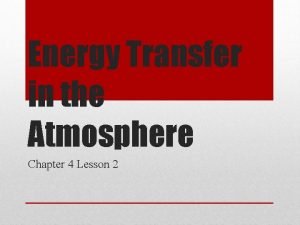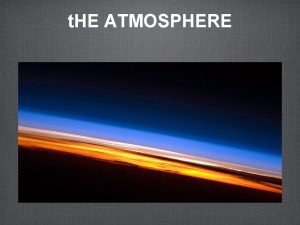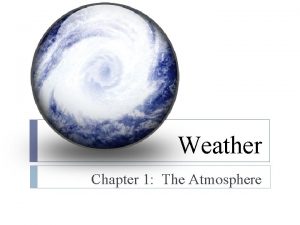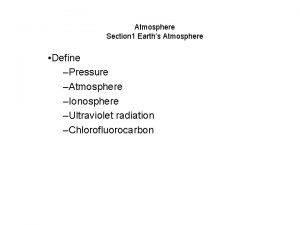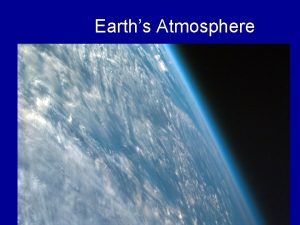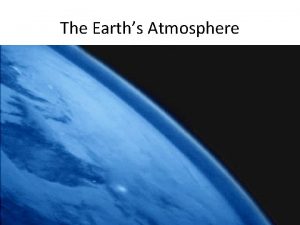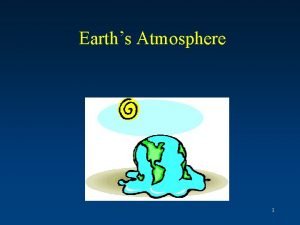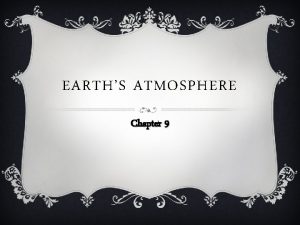Earths Changing Atmosphere EARTHS ATMOSPHERE SUPPORTS LIFE LESSON












- Slides: 12

Earth’s Changing Atmosphere EARTH’S ATMOSPHERE SUPPORTS LIFE LESSON 2

ATMOSPHERE BIOGRAPHY VIDEO �https: //www. youtube. com/v/1 YAOT 92 wu. D 8

The atmosphere makes life on Earth possible �The atmosphere is a whole layer of air that surrounds Earth which supports and protects life in several ways: 1. 2. 3. Absorbs harmful radiation Maintains Earth’s temperatures Provides elements essential for life

Characteristics of the Atmosphere �The atmosphere has chemical and physical properties �The density of the atmosphere decreases with altitude 1. Altitude is the distance above sea level 2. Density is the amount of mass in a given volume of a substance (the thickness or thinness of air) �The decrease of density with greater altitude means that most of the mass of the atmosphere is close to Earth’s surface

Materials in the Atmosphere �Most of the materials in the atmosphere are gases (Nitrogen 78%; oxygen gas 21%; Argon, carbon dioxide and other gases 1%) Nitrogen: promotes plant growth Oxygen: needed for animals & plants to perform life processes Carbon dioxide: plants use it to make food �Other tiny particles of solid or liquid materials include: dust, sea salt, and water droplets exist in the atmosphere

• Nitrogen gas is the major component of the atmosphere • Carbon dioxide plays a large role in global warming (burning of fossil fuels) • Ozone gas only makes up a small layer of the atmosphere and protects the surface of the Earth from excessive UV radiation.


Atmosphere Fact Sheet Temp. Range Location Width (in miles) Inside Layer Other Fact Layers � Troposphere � � Stratosphere � � Mesosphere � � Thermosphere � � Exosphere

• Earth is heated unevenly by the Sun • At the poles, the Sun’s rays strike the Earth’s surface at a much greater angle (less heat and energy are absorbed)



 Earths early atmosphere contained
Earths early atmosphere contained The roaring twenties lesson 3 changing ways of life
The roaring twenties lesson 3 changing ways of life Nazils
Nazils Chapter 13 section 1 guided reading changing ways of life
Chapter 13 section 1 guided reading changing ways of life Chapter 21 section 1 changing ways of life
Chapter 21 section 1 changing ways of life Life course perspective
Life course perspective Mark hughes' mother
Mark hughes' mother Describing earth's atmosphere lesson 1 answer key
Describing earth's atmosphere lesson 1 answer key Lesson 2 energy transfer in the atmosphere
Lesson 2 energy transfer in the atmosphere Earth layers foldable
Earth layers foldable Earths roation
Earths roation Whats a natural satellite
Whats a natural satellite Home sweet biome crossword
Home sweet biome crossword








